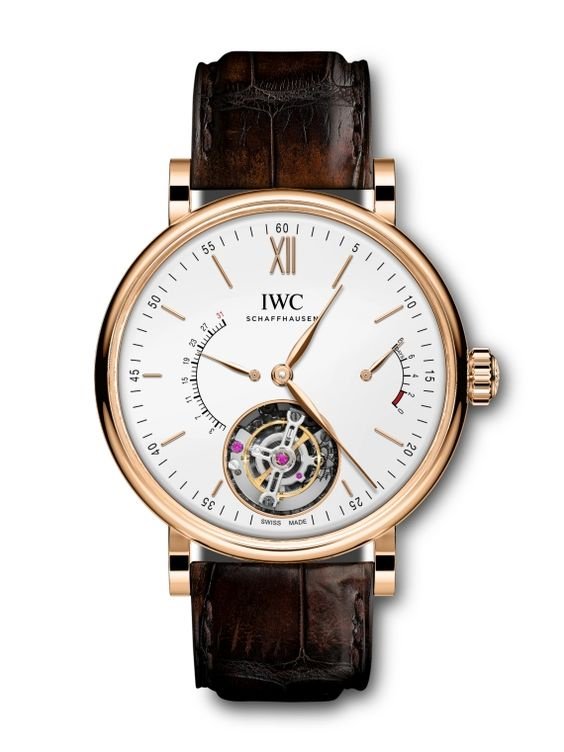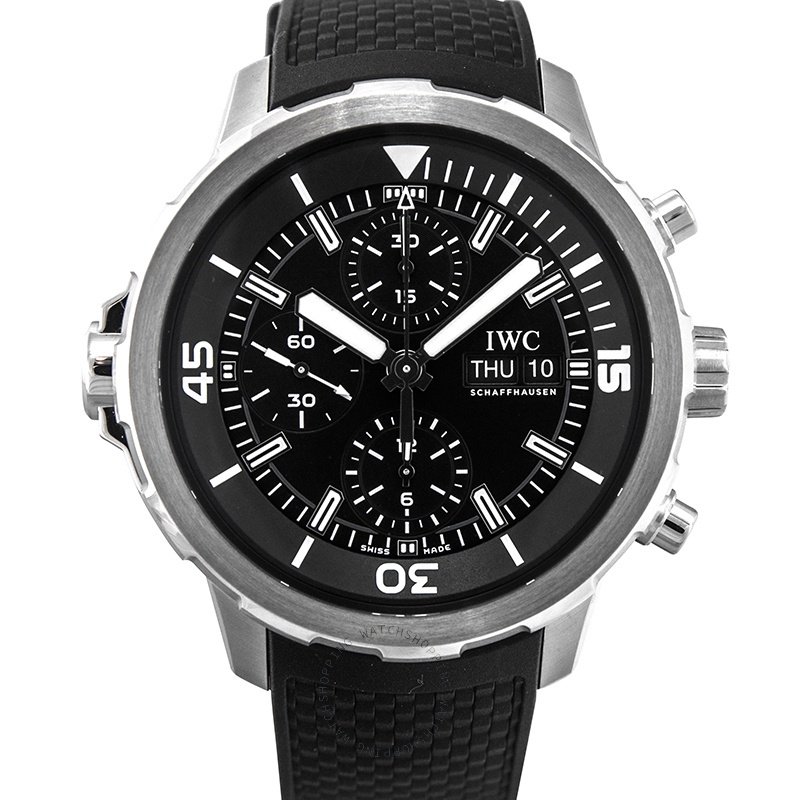Undecided Betweeen IWC or Rolex? Here is the guide for you

Published: Jun 13, 2021
Rolex vs IWC:
There are probably more differences to be appreciated between a Rolex watch and an IWC watch than there are similarities. Both companies have shown sheer determination to excel in all areas of Haute Horlogerie, whether that be materials, movement or style. Rolex has always made its own in-house movements. IWC Schaffhausen, on the other hand, often uses ETA and Valjoux movements, modifying them to make its own engines. Whilst there is nothing wrong in doing so, the choice between an independently crafted movement and an externally sourced one can sometimes create a divide. Saying that IWC watches are certainly more refined, and whilst their case constructions may not be tested under the same rigorous standards adhered to by Rolex, their refined, elegant designs are often preferred over the bolder, heftier look of a Rolex. Let’s take a look at both brands and how they fair up to one another.
History:
By the time Rolex was founded by Hans Wilsdorf in 1905, IWC had already gone through three hands in its first three decades. IWC did, however, remain committed to creating timepieces that adhered to the highest quality standards. It was founded in 1868 and began specializing in watches that incorporated Swiss-style, built from American-inspired engineering learned from working with Howard & Co. It took Rolex just four years to create a chronometer-certified movement. In 1915 IWC created their first two calibers.
The IWC Portugieser was created in 1939, followed by the Big Pilot’s watch in 1940. Five years later, Rolex launched the Datejust model – the first automatic watch to display a date feature. Rolex’s Submariner was then released in 1953 and the GMT-Master just a year later. In 1956 Rolex released the Day-Date model with an instantly recognizable fluted bezel. The IWC Aquatimer watch followed 11 years later. IWC Schaffhausen survived the quartz crisis since it offered collectors the Da Vinci model which operated on a quartz movement as opposed to a mechanical one. Rolex also began to use quartz in some of their Oyster models, yet remained as steadfast as ever in their approach to refining their mechanical movements.
Popular IWC collections:
IWC Portofino:
Portofino watches from IWC are classic dress watches with simple designs. Their minimalist round cases are crafted from gold or stainless steel and are powered by in-house calibers that deliver up to an 8-day power reserve. The Portofino Hand-Wound Tourbillon Rétrograde model features a retrograde date and a flying tourbillon in one.

IWC Portugieser:
If you’re looking for a watch with a recognizable design and a multitude of functions, the Portugieser watches from IWC feature designs based on marine chronometers. Kitted out with innovative tools like an annual calendar, a flyback chronograph or a perpetual calendar, these timepieces are perfect for keeping organized if you lead a busy lifestyle. Top models include platinum cases with tourbillons. The younger generation of Portugieser models, like the Chronograph 3714, is powered by the IWC 79350, based on the ETA Valjoux 7750.

IWC Pilot:
There are several reasons you may consider buying a pilots’ watch from IWC. From complication watches to smart ceramic cases, the versatile range can be enjoyed on the wrist whether you’re a professional pilot or not. Some models are completed with a tourbillon or a perpetual calendar, exemplifying the brand’s commitment to creating intricate, hand-crafted timepieces of the highest complexity.

IWC Aquatimer:
The Aquatimer models have broad case diameters. Their main distinguishable feature is an internal ring for safely measuring dive times and their water-resistant capabilities of up to 2000 meters. Some models from the Aquatimer collection are also equipped with a perpetual calendar combined with chronograph functions.

Popular Rolex collections:
Rolex Submariner:
The Rolex Submariner, launched in 1953, is probably the most recognized watch from the entire Rolex catalog. A screw-down crown with Triplock (triple waterproofness technology), a Glidelock extension facility on an Oyster bracelet, and 300-meter water-resistant cases are just some features that make this iconic watch a worthy investment that is almost certain to appreciate on the second-hand market.

Rolex Yacht-Master:
The Yacht-Master watch is available in stainless steel, gold, or platinum, as well as Rolesium (steel and platinum). It features a COSC-certified chronometer. Cementing Rolex’s links to the water sports industry since the ’50s, the cases are available in 29, 35, 37 and 40mm sizes. The later-released Rolex Yacht-Master II watches feature Regatta chronometers with a programmable countdown and a mechanical memory.

Rolex GMT-Master II:
The GMT-Master II offers three time zones and a scratch-resistant Cerachrom ceramic bezel. Some of the most collectible models from Rolex include the Pepsi GMT watch and the Batman GMT, showcasing colorful bezels that reflect their names. A rotating 24-hour bezel with an additional hand completes a full rotation every 24 hours, whilst the color of the bezel differentiates between day and night.

Rolex Datejust:
The Datejust was the first automatic watch to feature a date. The simple three-handed dial is a popular choice for those with a love for the classic three-handed dial design. Datejust models come in an array of colorful dials and different case materials including gold, steel, and bi-color options. The Jubilee bracelet is a five-piece metal band that exudes a sophisticated look on the wrist for dressing alongside formal attire.

Prices:
Some of the top models in the IWC catalog are on par with Rolex’s price list. Models like the Portugieser Grand Complication, which boasts over 20 complications can set you back around $209,000. The brand’s mid-range watches include the Big Pilot’s watch and the Ingenieur models, popular for their anti-magnetic and shock-absorbing, watertight constructions. These cost around $7000. IWC’s more affordable watches are those like the Pilot’s Watch Mark XVIII, which costs around 3,800 USD.
The Rolex Oyster Perpetual 39, the Explorer and the Air-King models which feature at the bottom scale of Rolex’s price scale still cost considerably more than IWC’s cheapest offerings, costing between 5000 to 6500 USD. Mid-range are the Submariner models priced at around $9000, followed by their higher-priced watches like the Datejust and the Day-Date which can set you back around 20,000 to 30,000 USD.
Conclusion:
Both IWC and Rolex share the same commitment to creating watches of the highest standard possible. Rolex has aggressively marketed its timepieces, pitching them to everyone and anyone. Their rugged and robust designs will survive any challenge they are faced with. IWC Schaffhausen, on the other hand, will appeal to collectors of sophisticated wristwatches. They may not always use their own movements but have created a presence within the wristwatch market that is well received and highly regarded amongst elite watch collecting circles.